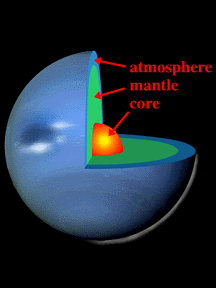This is a drawing of the interior of Neptune.
Click on image for full size
An Overview of Neptune's Interior
The Giant planets do not have the same kind of layers inside that the Earth-like planets do. Their evolution was quite different than that of the Earth-like planets, and they have much more gas and ice inside.
Neptune's interior make-up is primarily methane ice, just as Uranus' is.
Motions in the interior of Neptune help form the magnetosphere of Neptune. Heat generated within Neptune helps form the unusual winds of the atmosphere.
You might also be interested in:

Motions in the interior of a planet help carry heat from the inside to the outside. The drawing to the left illustrates a kind of global motion that is typical of motions in the atmosphere as well as interior
...more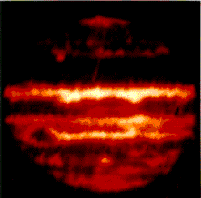
The picture shows places on Jupiter which are hot. Jupiter is a very warm body in space, as shown in the picture, and this warmth is associated with the energy of Jupiter. Neptune has also been found to
...more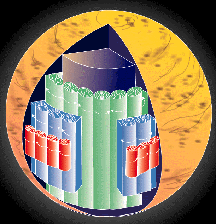
Motions in the interior of a gas-giant planet such as Neptune may be very different from the motions within the Earth. A second idea for the motions in the interior of a gas-giant planet is shown in this
...more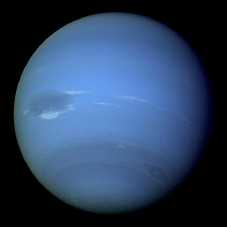
If you had a quiz question in school that asked what year Neptune was discovered, you'd probably choose 1846. But Neptune wasn't discovered the way all the other planets in our solar system were. Astronomers
...more
Neptune's atmosphere shows a striped pattern of clouds. This cloud pattern is very similar to that of Jupiter and Saturn. Neptune even has a Great Dark Spot similar to Jupiter's Great Red Spot. The history
...more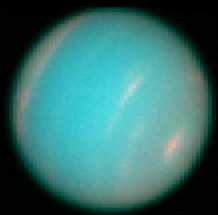
This image shows the new Great Dark Spot of Neptune, which was discovered using the Hubble Space Telescope. The image shown here, shows a "hole" in the clouds of Neptune in pink, in the northern hemisphere,
...more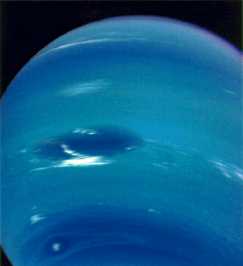
The giant planets have definitely changed since their formation. But how much remains to be seen. Most of the original air of the giant planets remains in place. (The earth-like planets lost most of their
...more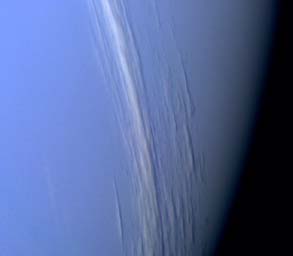
This image shows some clouds known as "cirrus" clouds, extending for many kilometers across the face of Neptune. These clouds are very high up, for they can be seen to cast shadows on the lower clouds,
...more


